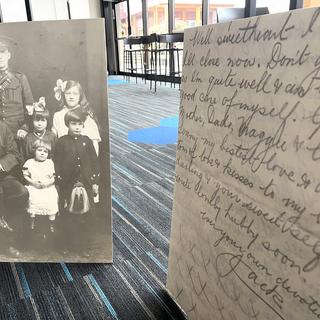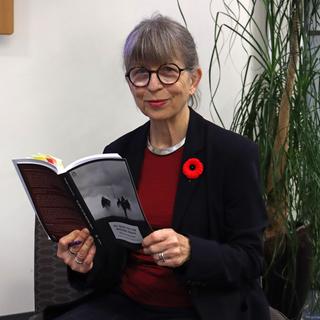Dr. Marni Stanley, former dean of VIU’s Arts and Humanities Faculty, has donated her graphic narrative collection of nearly a thousand titles to the library.
Vancouver Island University’s (VIU’s) library is now home to one of the largest comic and graphic narrative collections found at any university library.
Dr. Marni Stanley, former dean of VIU’s Arts and Humanities Faculty, has donated her collection of graphic novels and comics, which she has been collecting for decades, to the library. The collection can be found on the main floor of the library just past the service desk.
“This is an important, progressive and relatively rare corpus of material within the academic library context and is one of the most valuable in-kind donations ever received by VIU library,” said University Librarian David Alexander. “Access is fundamental to the values of the library, we are so grateful to Dr. Stanley for sharing this significant collection with students, faculty and the community."
Stanley’s collection goes well beyond the DC and Marvel universes – in fact, you won’t find those comics in this collection. In her years of collecting, Stanley focused on female authors, indie comics, autobiographies, graphic journalism and LGBTQ+ comics, all from a variety of countries.
“Another strong subset is medical comics, where people are writing about mental and physical health issues they are struggling with,” she said. “There are also quite a few trans narratives about people transitioning. I encourage people to come and have a browse. If you’re not familiar with the genre, there’s lots of small ones to get started with.”
Stanley, who also taught English and Studies in Women and Gender at VIU, has researched and published on comic books, graphic novels, manga, graphic memoir and other forms of sequential art for years. She started getting into comics as a kid and developed a passion for the genre while in grad school at Oxford University in the 1980s. During that time, comics such as The Dark Knight, Watchmen and Maus started appearing and her interest was reignited.
“In the past, people dismissed graphic narrative as pulp fiction for the barely literate,” she says. “However, in the last 30 years comic art has moved from a problem in the critical hinterland to a major genre with its own well-developed critical practice. It’s a growing area of study and it’s become very interdisciplinary.”
For example, graphic narrative is being used more and more in scientific disciplines, where visual diagramming can help people understand big-picture concepts. Another exciting aspect of reading graphic narratives for Stanley is that it draws on both sides of the brain – you need to read the pictures as well as the words to get a full understanding of the book.
“And there’s some wonderful and weird formats,” she said. “Some of them come folded up in little envelopes. One is in a box and comes with maps and cards, but it’s a single comic. And there’s also some history of comics in the collection – a history of women in comics, Black women in comics – and comic theory, or how to make comics.”
To learn more about the collection, come to Stanley’s talk – There’s More to Comics Than You Might Think – on Monday, March 11 at noon. Learn more.
-30-
Media Contact:
Jenn McGarrigle, External Communications Manager, Vancouver Island University
C: 250.619.6860 | E: Jenn.McGarrigle@viu.ca | T: @VIUNews
The VIU community acknowledges and thanks the Snuneymuxw, Quw’utsun, Tla’amin, Snaw-naw-as and Qualicum First Nation on whose traditional lands we teach, learn, research, live and share knowledge.





